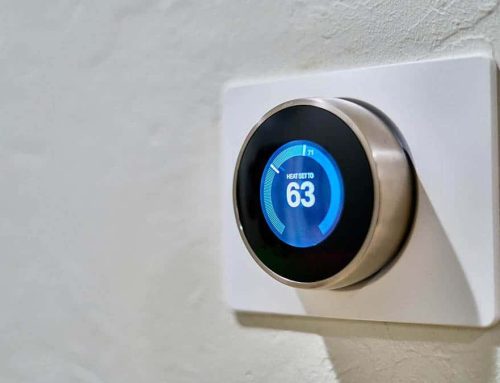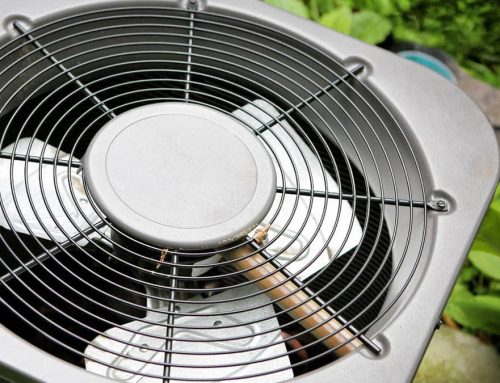What to do When Your Electric Furnace Won’t Turn On

There are few things more frustrating than not having your heater working when you need it—especially when you’re shivering your way through a chilly winter night. But, when your electric furnace won’t turn on, there’s no need to panic. With some simple troubleshooting, you might just be able to fix the problem on your own. And if not, our expert heating technicians are always available to help. Here’s what you should do when you’re faced with a furnace that won’t turn on.
Step 1: Check for a blown fuse
If you find that there is no power going to your electric furnace, it’s possible that you are experiencing a blown heating fuse. Fortunately, if you have a new fuse on hand, you can replace the blown fuse and get your electric furnace up and running in no time at all. If you’re not comfortable replacing the fuse on your own, you can always call a professional to do it for you.
Step 2: Examine the thermostat
Your furnace takes orders from your thermostat, relying on it to give the signal to start or end a heating cycle. If the thermostat isn’t doing its job, the furnace can’t either. First, make sure the thermostat is programmed correctly. It should be set to “heat” instead of “cool”, and “on” as opposed to “off”. Once you verify that the settings are correct, try raising the thermostat’s temperature by a few degrees and see if your furnace kicks on. If not, you may be dealing with a thermostat problem, not a heater problem.
If your thermostat won’t turn on either, start by replacing the batteries. If the thermostat still won’t respond to your inputs, head down to your home’s circuit breaker and make sure nothing is tripped. In the end, if none of these steps work, it might be time to replace the thermostat altogether—which is a perfect time to upgrade to a new programmable or Wi-Fi enabled smart thermostat.
Step 3: Change the furnace filter
When’s the last time you changed your furnace’s filter? For many homeowners, the answer to this question could range from “last month” to “last year”, or even “never”. Your furnace relies on its filter to stop dust and dirt from entering the system and damaging vital components. The filter also stops these airborne irritants from entering your home and circulating around. When the filter gets too dirty, it can compromise airflow, forcing your furnace to work harder in order to supply your home with heated air. In severe cases, an extremely clogged filter can cause the furnace to overheat, triggering an automatic shutdown.
Follow the steps below to swap out your furnace’s filter with a new one.
- Turn off the furnace: Make sure and turn your thermostat from “on” to “off” before attempting to change your filter. This will keep your system from blowing air and sucking up debris without a filter.
- Locate the filter: The exact location will depend on your furnace’s design, but typically, you’ll find the filter located between the return air duct and the furnace.
- Ensure you have the right size: Examine the current filter before installing a replacement. On the old filter’s frame you’ll find its dimensions for height, width, and thickness. Take note of this measurement to ensure that the replacement filter is the same size.
- Remove the existing filter: Remove the compartment door, if your furnace has one, and slide out the old filter.
- Install the new filter: Make sure the arrow on the side of the new filter faces towards the furnace, and away from the return duct.
- Turn the furnace back on: With the new filter ready to protect your system from dust, dirt, and debris, you can turn your thermostat back to the “on” position.
To avoid future problems, we recommend making regular filter changes. Basic fiberglass filters should be changed every other month at least, while paper filters can last longer—typically at least four months. Reusable electrostatic filters should be cleaned every 4-6 weeks to prolong their lifespan. Consider changing your filters more often if:
- You have pets
- Someone in your home has asthma or allergies
- Someone in your home smokes
- You notice an increase in dust throughout the home
- You leave your windows/doors open often
Don’t want to change your filters on your own? No problem. As a part of our heating maintenance checklist, we will clean or replace your filters during our 33-point system inspection.
Step 4: Consider replacing the furnace
If your furnace frequently breaks down or struggles to meet demand all winter long, it might be time for a replacement. While the upfront costs are significant, you can’t put a price on long term reliability and energy efficiency. If any of the following statements apply to your furnace, it’s time to explore your replacement options with an HVAC expert today.
- Your furnace is over 15 years old
- Your furnace needs frequent repairs
- Your monthly energy bills are suddenly increasing
- Your home has uneven heating, with some rooms always feeling cold
- Your furnace makes loud and worrisome noises
Step 5: Know when to call in the pros
If the steps above weren’t enough to bring your furnace back online, it’s time to call in the professionals. While it’s possible to fix some minor furnace problems on your own, it’s a good idea to leave anything involving electric work and vital components to an experienced technician. After all, you don’t want to accidentally make a problem worse by attempting to fix it without the proper tools or training.
Once you make the call for a repair, an expert technician will fully examine your system, checking all the likely causes that could be behind your heater problems. Depending on what the issue ends up being, the technician may recommend a number of solutions, including potentially replacing the system.
Trust Hays: The Leaders in Home Comfort
Whether your furnace won’t turn on or you’re dealing with other heating issues, the pros at Hays will change the way you think about home comfort. We take pride in the work we do, and go the extra mile to ensure every job is completed to your satisfaction. Contact us today for all your HVAC needs—we’ll be happy to help!


